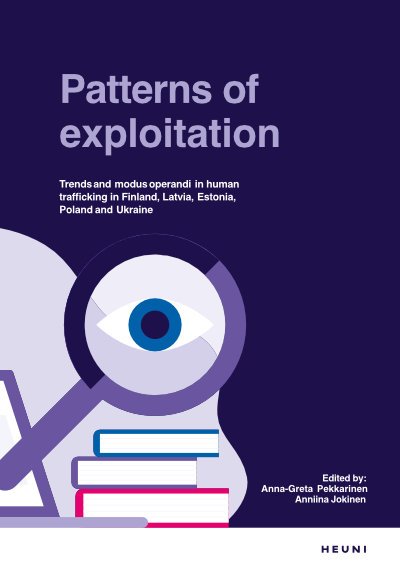Patterns of exploitation. Trends and modus operandi in human trafficking in Finland, Latvia, Estonia, Poland and Ukraine
By Anna-Greta Pekkarinen, Anniina Jokinen
TRAFFICKING IN HUMAN BEINGS is largely a hidden form of criminali ty. As an example, it has been estimated in Finland that up to 90 per cent of human trafficking is undetected (Yle 23.3.2021). The overall picture of the phenomenon is bound to be limited because of this, and because the offenders continuously seek new methods and routes for their operations. Since the start of the ELECT THB-project, unforeseen events with a global impact have taken place. The COVID-19 pandemic affected the movement of people and potentially led to changes in the modus operandi of the perpetrators, as well as to changes in the detection of trafficking and exploitation. However, not much is yet known of the longer-term impacts of the pandemic on modus operan di or routes used by traffickers and facilitators. Furthermore, the geopolitical landscape of Europe changed rapidly in 2022 as a result of the escalation of the Russian invasion of Ukraine. In light of the ongoing war, particular attention has been paid in this report to the risk that Ukrainian refugees face of exploitation and trafficking. The countries covered in this report share similarities but also have their differences. Finland is primarily a country of destination in terms of human trafficking, whereas Estonia, Latvia, Poland and Ukraine are countries of origin, transit and destination. There are also differences in the size of the population of these countries, in their labour markets and in the social protection measures that are in place. The profiles of typical victims vary between the countries, ranging from their own citizens to labour migrants, asylum-seekers and undocumented migrants. Regarding labour exploitation, it has been established in all of the countries that migrant workers in particular may face exploitative recruitment and employment practices, especially in low-paid, low-skilled jobs. Perpetrators use different legal and illegal ways to conceal their activities, some of which are presented in this report. As for sexual exploitation, the role of the internet and technology has become increasingly important. This is all the more true as a result of the COVID-19 pandemic, which has restricted travel and in-person contacts and allowed for new ways of recruiting, controlling and exploiting vulnerable persons.
Helsinki: HEUNI, 2023. 94p.


